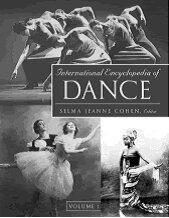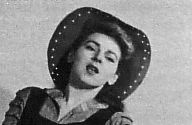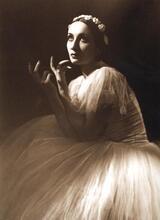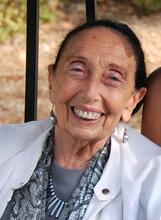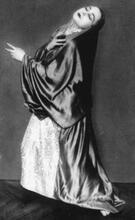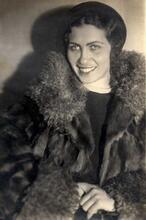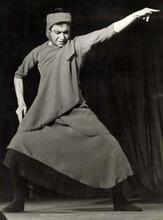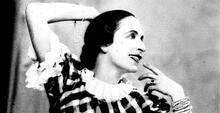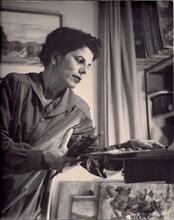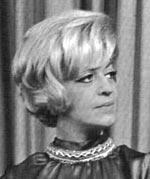Margarethe Wallmann
Margarethe Wallmann’s birth origins remain unknown, being born in either 1901 or 1904 in Vienna or Berlin. However, she studied ballet at the Court Opera in Berlin and later became a member of a legendary company. However, she became increasingly interested in Middle-European Expressionist dance and in 1930 formed her own company, the Dance Collective (Tänzer-Kollektiv), whose members of diverse nationalities and artistic styles, explored the pluralist style of dance. The ensemble’s production of Orpheus Dionysus was critically acclaimed for its power and unique form of modern Expressionism. She worked as a choreographer and ballet instructor during the Austro-fascist period in Vienna, but was eventually forced to flee in 1938. She created a ballet ensemble in Buenos Aires and later gained success as an opera director in Milan. She remained a popular opera director until the 1970s. She died in 1992.
Early Dance Studies and Performance
The date and place of Margarethe Wallmann’s birth cannot be ascertained, since the artist gives no clear indication of this in her autobiography, Les balcons du ciel (The balconies of heaven), while biographical sources (including her contract with the Vienna State Opera) differ from each other. She appears to have been born in either Vienna or Berlin on June 21, 1904 or earlier, on July 22, 1901. She is alleged to have studied at the ballet school of the Court Opera in Berlin. What is certain is that she was taught by Eugenia Eduardowa (1882–1960) in Berlin and later by Heinrich Kröller (1880–1930) and Anna Ornelli in Munich. From 1923, she studied in Dresden with Mary Wigman (1886–1973) and became a member of the legendary touring company that also included Hanya Holm (1893–1992) and Gret Palucca (1902–1993). Although trained in classical ballet, Wallmann was increasingly attracted to Middle-European Expressionist dance. In 1928, she lectured in New York on the Wigman Technique and the nature of Expressionist dance.
The Dance Collective
Beginning in 1929, Wallmann headed the Wigman School in Berlin. In 1930 she formed her own company, the Dance Collective (Tänzer-Kollektiv), in which she was already engaged in grappling with the pluralist style of dance. The members of her group, who numbered thirty-seven in 1931, were not only of diverse nationalities, but also practiced a variety of artistic styles. Their aim was to combat growing unemployment in Berlin by mounting large-format dance presentations. With this ensemble, Wallmann produced Orpheus Dionysus in Munich in 1930, with Wallmann and Ted Shawn (1891–1972) in the leading roles. (It was Shawn who in 1931 invited Wallmann to teach the Wigman Technique at the Denishawn School in Los Angeles.) Not only did the work’s success win her first prize in the competition of the Third Congress of Dancers in Munich, but the critical praise also led to an invitation to participate in the Salzburg Festival, where Das Jüngste Gericht (The Last Judgment) was premiered in 1931. In the choreography of this work, which she described as “a dance mystery play,” Wallmann again combined various modes of modern Expressionist dance (from Delsartes naturalism through Dalcroze’s Rhythmics to Laban’s “space”) into one whole. The powers of expression of both the company and the soloists were particularly striking. Wallmann subsequently directed the movement in a series of theater and opera productions at the Salzburg Festival (including Max Reinhardt’s Faust).
Directing under Austro-fascism
She was able to move to Vienna even before the 1933 Nazi prohibition of work by Jews. From autumn 1933, she served as choreographer at the Vienna State Opera, where her first work was The Last Judgment. During the Austro-fascist period (1934–1938), there was a change in both her aesthetic mindset and her themes. Until 1938, as ballet director of the Vienna State Opera, she created a repertoire of a specifically Austrian nature, which displayed the classical schooling of the ensemble in works such as Fanny Elssler, Österreichische Bauernhochzeit (An Austrian Country Wedding), and Der Liebe Augustin.
Post-War Success
On February 26, 1938, Wallmann's contract as balletmaster was renewed for one year, but following Hitler’s entry into Austria on March 11, 1938, the contract was cancelled as part of the “Cleansing Operation” that ousted all Jews from official positions. In the same year, she succeeded in getting an engagement at the Teatro Colon in Buenos Aires, where she was able to create a ballet ensemble until 1948. In 1949 she moved to Milan, where she worked with ever-increasing success at directing opera. In 1954 she returned to the Salzburg Festival. In 1958, she directed Tosca at the Vienna State Opera under Herbert von Karajan, a production which is still performed by the company. Until the 1970s she was in great demand as a director of opera at the world’s major opera houses.
Margarethe Wallmann’s work exemplifies the transition period from the tempestuous Expressionism of the 1920s to the polished, stylized dance drama of the 1930s. In addition, she availed herself of the classical mode of ballet, as in The Sleeping Beauty at La Scala in Milan. The choreographer and director died in Monte Carlo on May 2, 1992.
Selected Works by Margarethe Wallmann
Orpheus Dionysos (Ch. W. Gluck). München: 1930.
Das jüngste Gericht. Libretto: F. Emmel, Musik: G. F. Händel, Salzburger Festspiele, Salzburg: 1931, Neueinstudierung Wiener Staatsoper: 1933.
Orpheus und Eurydike (Ch. W. Gluck), Regie und Choreographie: Margarethe Wallmann, Salzburger Festspiele: 1933, Neueinstudierung Wiener Staatsoper: 1935.
Fanny Elßler (M. Nádor), Wiener Staatsoper: 1934.
Österreichische Bauernhochzeit (F. Salmhofer), Wiener Staatsoper: 1934, Neueinstudierung, Wien: 1946.
Der liebe Augustin (A. Steinbrecher), Wiener Staatsoper: 1936.
Gli Uccelli und Antiche Danze ed Arie (O. Respighi), Mailänder Scala: 1937.
Gli Uccelli (O. Respighi), Teatro Colon, Buenos Aires: 1937.
Jeanne d’Arc auf dem Scheiterhaufen (A. Honegger), Regie und Choreographie: Margarethe Wallmann: 1948; thereafter primarily opera production.
Amort, Andrea. “Die Geschichte des Balletts der Wiener Staatsoper von 1918 bis 1942.“ Dissertation, Universität Wien: 1981.
Ibid.
“Margarethe Wallmann.” In Pipers Enzyklopädie für Musiktheater, Band 6, München: 1997.
Ibid., and (Hg.), Mimi Wunderer-Gosch: “österreich tanzt: Geschichte und Gegenwart (mit englischsprachigen abstracts).” Wien: 2001.
Derra de Moroda, Friderica. Margarete Wallmann and the Vienna State Opera. Interview with Miss Derra de Moroda. In Dancing Times, 1934, June (1934), 254–255.
Ibid.
“Miss Margarete Wallmann.” In Dancing Times, July (1938).
“ … jeder Mensch ist ein Tänzer.” Ausdruckstanz in Deutschland zwischen und 1945. Hrsg. von Hedwig Müller und Patricia Stöckemann, Gießen: 1993.
“‘Wallmann, Margarethe.’ Zum Tode der Choreographin.” tanzdrama. Magazin, Heft 19, Köln: 1992.
Wallmann, Margarita. Les Balcons du ciel. Paris; 1976.
Ibid.
“Balconato del cielo.” Mailand: 1976.
Jackson, George. “Margarette Wallman.” Obituary. Dance Magazine, November, 1992, 36.

